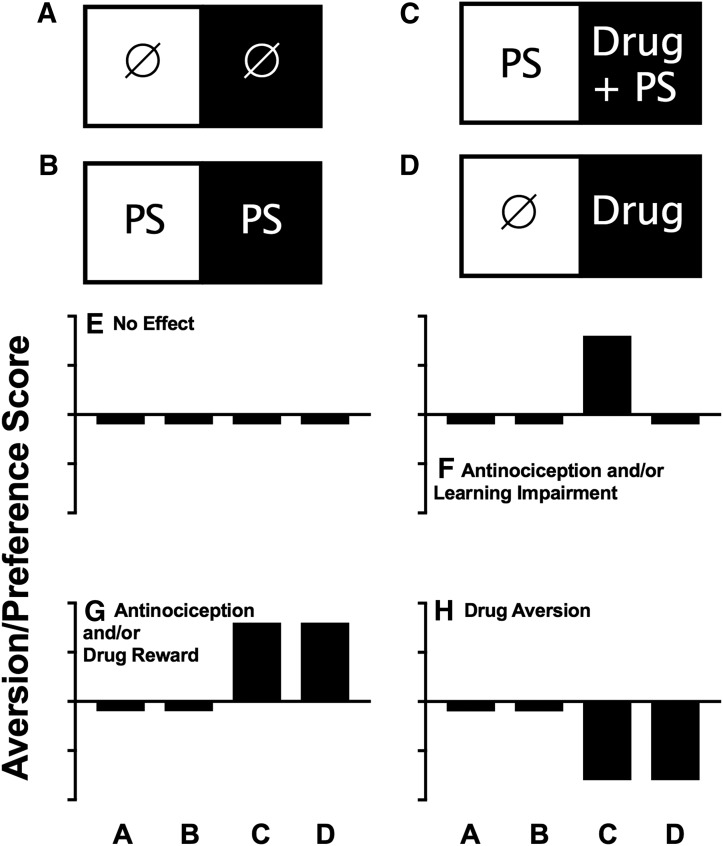Fig. 6.
Common experimental groups and drug-effect profiles in assays of drug-induced CPP in subjects with a putative pain state as a contextual stimulus. (A–D) Common conditioning regimens in each of the two compartments of a place-conditioning apparatus during conditioning. The circle indicates the control treatment (e.g., no treatment or vehicle administration), PS is the pain stimulus as contextual stimulus that is present or absent in both compartments, and drug is the test-drug treatment. (E–H) Common drug-effect profiles produced by each of these conditioning regimens, and possible interpretations of each drug-effect profile are also shown in each panel. Abscissae are the conditioning regimen as shown in (A) through (D). Ordinates are the aversion/preference scores expressed as time in the main treatment-paired compartment after conditioning minus time in that compartment before conditioning. Bars below and above the abscissa indicate a CPA or CPP, respectively.

